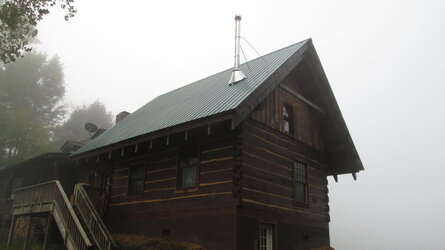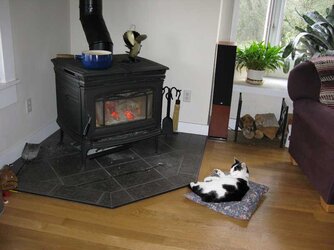Mod Edit: Moved from 2 yr old thread to this new one.
Can you provide a pic of the pipe outside? I am debating on this same set up, but am struggling with the aesthetic outside.That's my Oslo corner installation. The chimney, single wall, goes straight up to the ceiling box where it becomes double wall. Looks great inside. The ceiling / roof is 12 /12 pitch. I have a side porch roof 5/12 pitch.it intersects the main roof. The chimney is tall at the back of the house. It has braces back to the main roof. Actually we think it looks fine for a woods cabin. The only concern is cleaning. I can do a top down by removing the top section. The shed side roof that I can stand on makes this possible. I would't do what your proposing.
Last edited by a moderator:


 orner install== 6 foot overhang
orner install== 6 foot overhang
